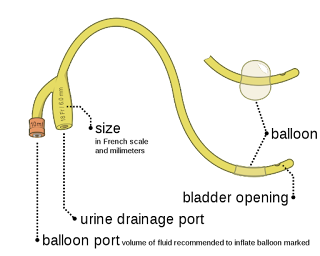Getting to Know the Urine Catheter and the Types and Conditions That Need It
 |
| Getting to Know the Urine Catheter and the Types and Conditions That Need It |
A urinary catheter
A urinary catheter is a small tube that is usually inserted into the urinary tract to drain urine or empty the bladder. This tool is often used in patients who have difficulty urinating.
The accumulation of urine in the bladder is at risk of causing infection, even kidney damage. Therefore, patients who experience difficulty urinating or urinary retention need to use a urinary catheter as a tool to prevent complications that can occur.
Various Conditions Requiring a Urine Catheter
In addition to being used for patients with complaints of urinary retention, urinary catheters can also be used in patients with other medical conditions, such as:
- Difficulty holding urine or urinary incontinence
- Nerve damage that affects bladder function
- Emptying the bladder before or after certain surgeries
- Blockage of the urinary tract (urethra) due to scar tissue or an enlarged prostate
- Administration of drugs directly into the bladder, for example bladder cancer chemotherapy
- Monitoring urine production, usually for patients admitted to the ICU
Types of Urine Catheters
Urinary catheters are of various types, with different functions for each type. The following are several types of urinary catheters that can be tailored to the needs of the user:
1. Intermittent catheter
Intermittent catheter is used for temporary use. Usually, this catheter is only intended to empty the bladder and is removed immediately when urine has stopped flowing.
An intermittent catheter will be inserted into the body through the urinary tract opening and the other end left open to allow urine to flow into the toilet or connected to a urine collection bag. This type of urinary catheter is commonly used by postoperative patients or chemotherapy patients.
2. Indwelling catheter
Unlike the intermittent catheter, an indwelling catheter or Foley catheter stays in the bladder for a longer period of time. This type of catheter is equipped with a balloon at the end of the tube to hold the catheter in the bladder.
Indwelling catheters can be placed in two ways, namely through an opening in the urinary tract such as an intermittent catheter or a small hole made in the abdomen through a surgical procedure.
3. Condom catheter
Unlike the other two types of catheters, the condom catheter is used on the outside of the penis. This catheter is shaped like a condom and there is a tube that connects the condom to the urine collection bag.
In addition to urinary retention and incontinence patients, this type of catheter is also often used in patients who have mental disorders, such as dementia.
Urinary catheters are generally safe to use. However, the use of a urinary catheter allows the entry of germs into the bladder. Therefore, it is important to always maintain cleanliness and change the catheter regularly to avoid urinary tract infections.
You also don't have to worry about the procedure for inserting a catheter through the urinary tract. In the procedure, the catheter tube will be smeared with gel first to reduce discomfort during the installation process.
If you have a condition that requires long-term use of a urinary catheter, make sure you have been briefed on how to care for the catheter from your doctor. That way, the urinary catheter can function properly and you can avoid urinary tract infections.
Related Search:
- urine catheter,
- external urine catheter,
- female external urine catheter,
- blood in urine catheter,
- urine catheter sizes,
- do you get a urine catheter during a colonoscopy,
- urine catheter female,
- female urine catheter,
- inserting urine catheter,
- urine catheter insertion,
- male urine catheter,
- urine catheter bag,
- urine catheter women,
- urine catheter for men,
- men's urine catheter,
- condom urine catheter,
- urine catheter supplies,
- sediment in urine catheter,
- suction urine catheter,
- permanent urine catheter,
- urine catheter kit,
- urine catheter clamp,
- urine catheter for women,
- purewick urine catheter,
- urine catheter procedure,
- silicon urine catheter,
- urine catheter insertion male,
- blood in urine catheter during labor,
- do you get a urine catheter during an endoscopy,
- urine catheter irrigation,
- silicone urine catheter,
- how to poop with a urine catheter,
- how to empty urine catheter bag,
- urine catheter size for female,
- urine catheter insertion procedure,
- urine catheter size,
- urine catheter bags,
- pediatric urine catheter,

Post a Comment for "Getting to Know the Urine Catheter and the Types and Conditions That Need It"